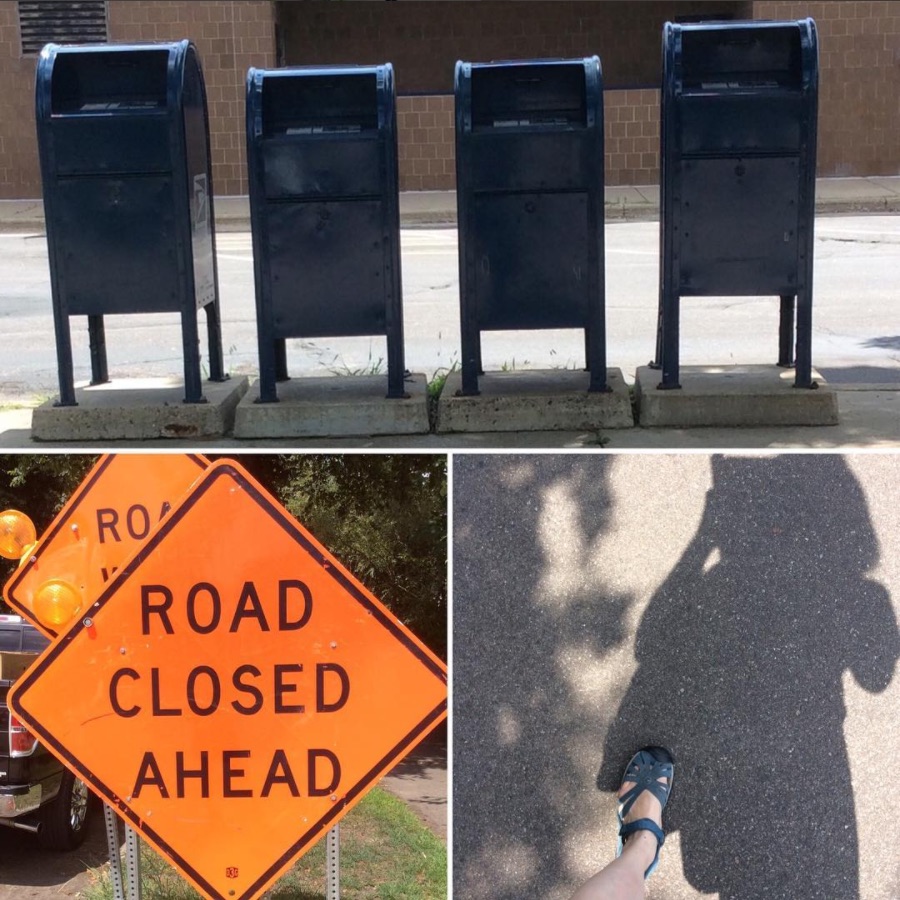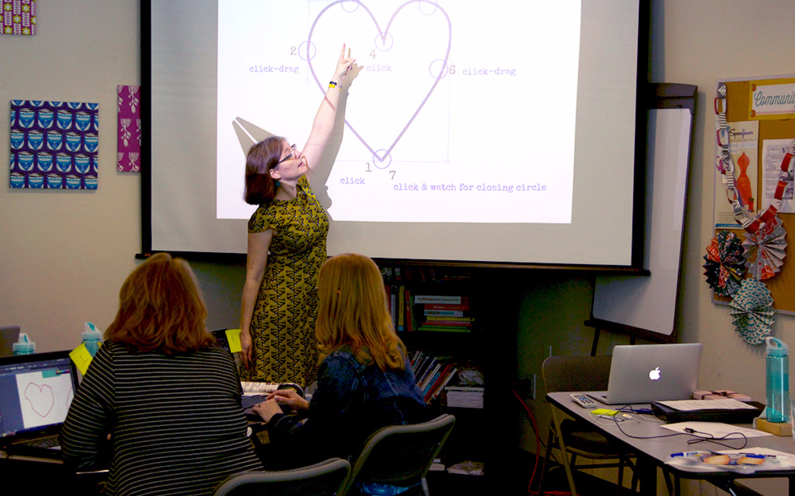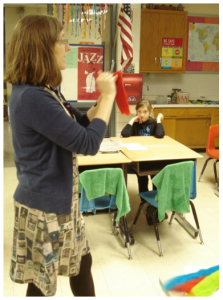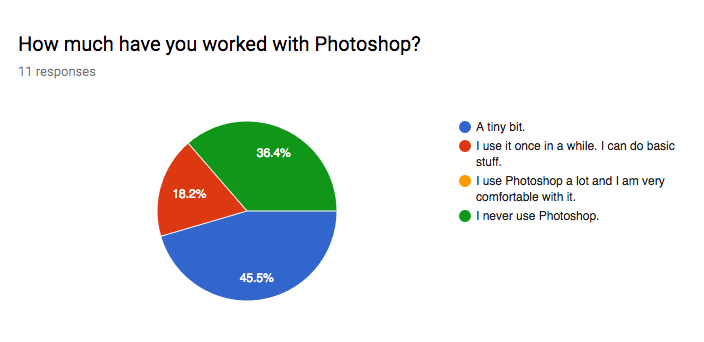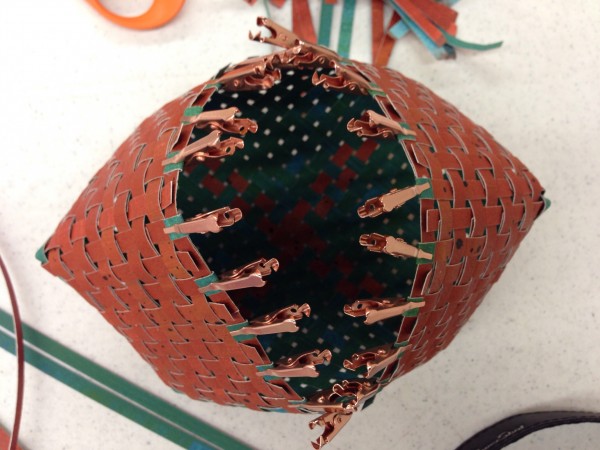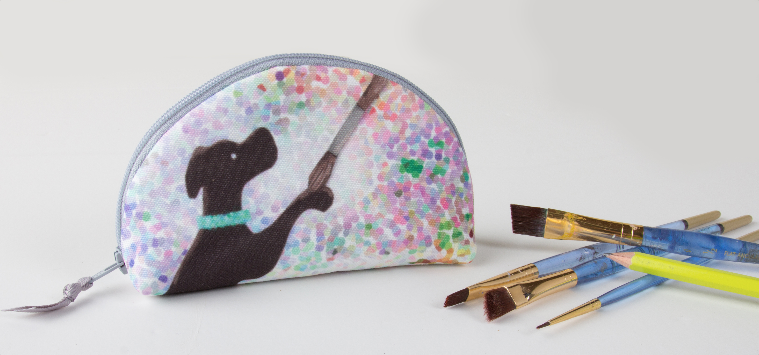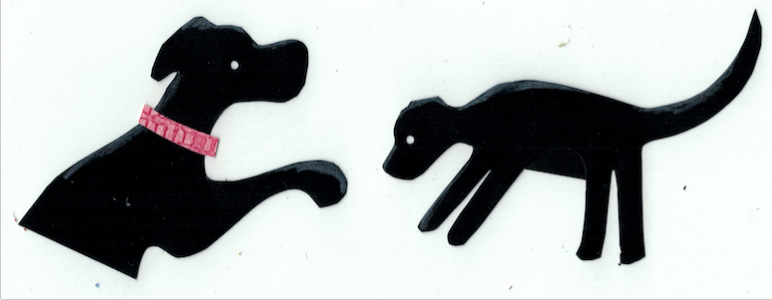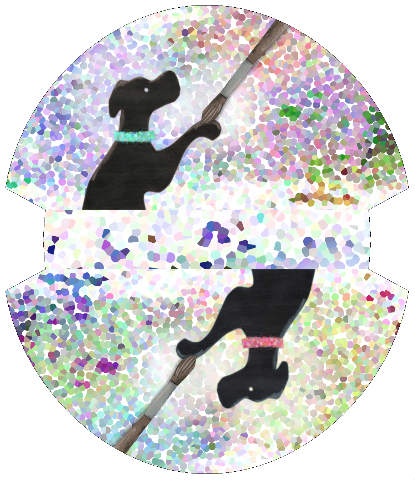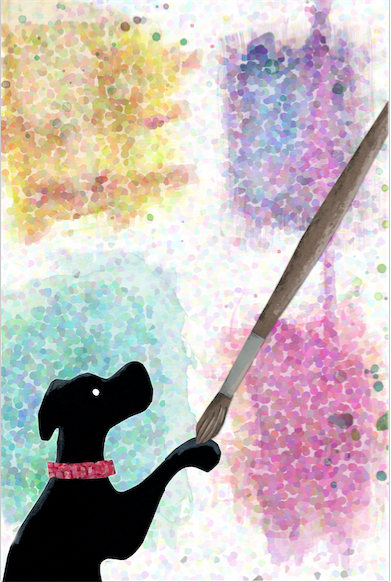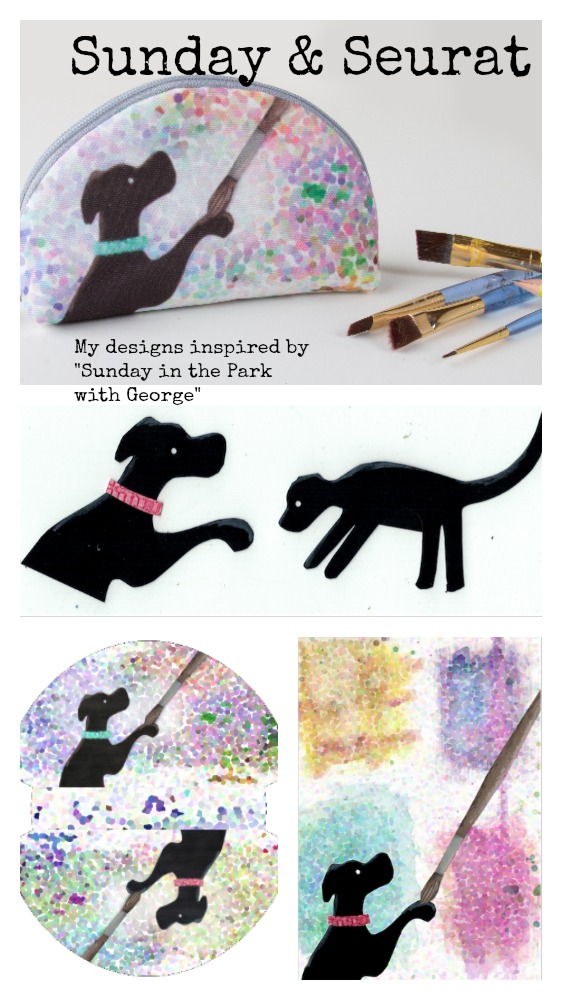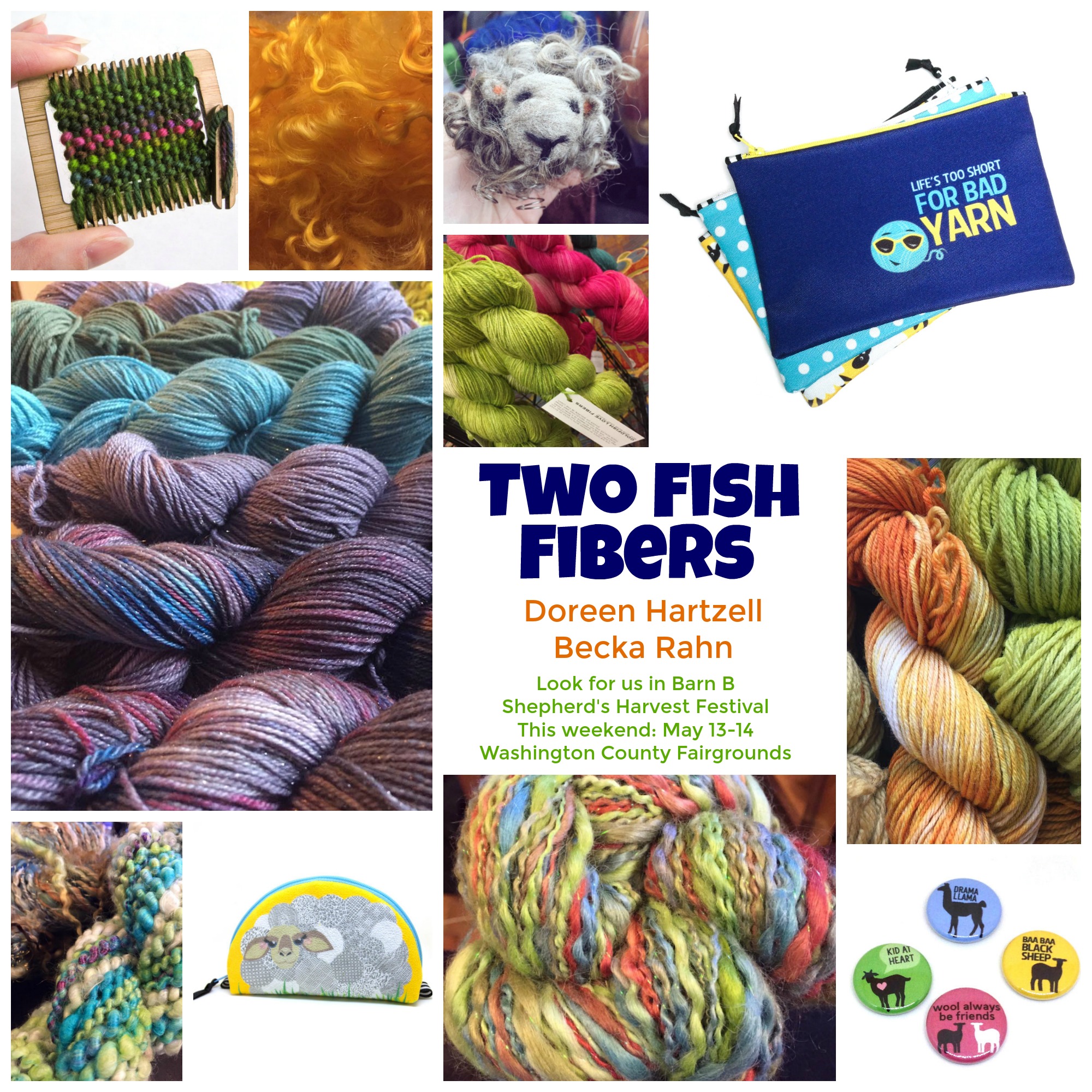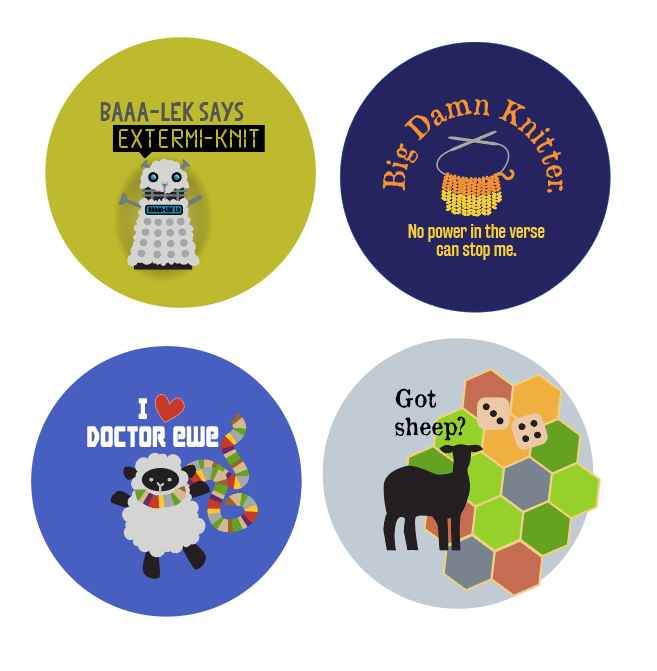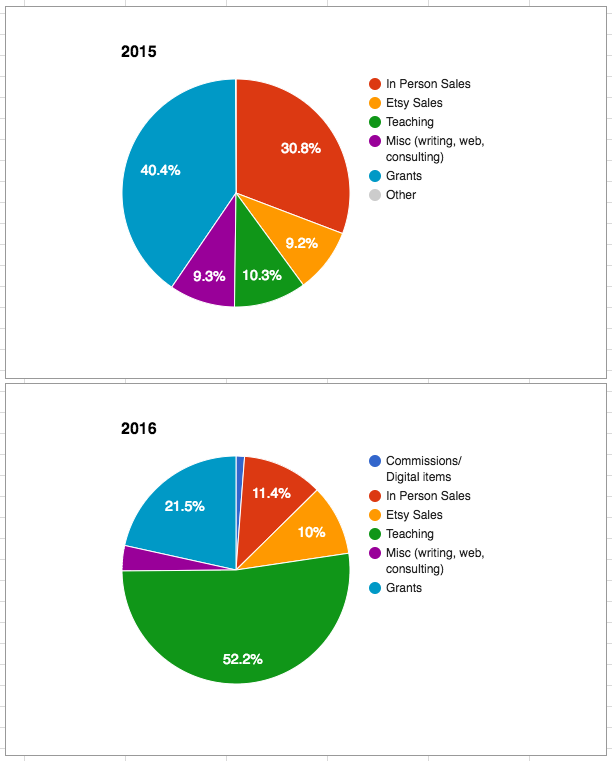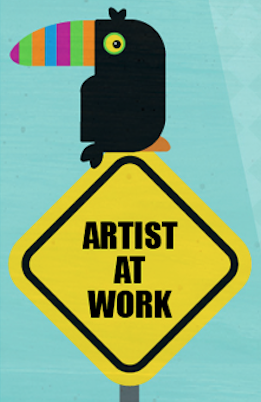My art supports my community.
I posted this collection of photos to Instagram the other day and it got me thinking. I took the photos as I was walking over to the post office that is just down the block from my house. This is part of my regular routine: walking over to the post office to drop off an Etsy order. Unless it is -20 degrees, I usually walk over there; I don’t like to “work out”, so I make myself walk places a lot. I thought to myself (and laughed a little as I thought about it) “I bet nobody knows that every Etsy shop order they place with me is delivered part of the way on foot.”
And then the more I thought about it, the more I thought that’s part of the story I should be telling. That’s part of the cool thing about both having a small business and working with small businesses. It’s not about distribution centers and corporate culture; it’s about people with stories.
So here are some stories that you wouldn’t know about my business.
I do hand deliver every order you place with me to my neighborhood post office on foot. Sometimes I walk my dogs over too. I have known the people that work in that post office for more than 12 years. It’s a really nice group and they are super helpful whenever I have a question or a problem with shipping something.
My small business also helps support a bunch of other small businesses. There is an art form in itself to sourcing materials to make handmade items for sale. When I first started making and selling things, I used to save all of my coupons and buy everything at Joann Fabrics. But as my business grew, I started to find other sources for the things I needed a lot of. I get all of my zippers for zipper bags from a shop on Etsy called Zipit. She carries everything I could possibly need and she lives just 1 state away from me, so everything ships to me super fast. Similarly, I get purse frames from another Etsy shop, and ribbon for zipper pulls from another Etsy shop. I ordered ultra suede scraps from a shop the other day for a new project I am working on. All of the buttons for the garments for my last exhibition came from Etsy shops. That’s always the place I start when I need a new material; I love the idea that I help make those shops successful too.
I also make a lot of my items with the help of two companies: Spoonflower and Ponoko. They are bigger businesses than mine, but they are still small businesses. And they are small enough that I have a relationship with them. I know people who have worked at both places and I have visited Spoonflower many times. They own equipment that I could never have access to without them. A $100,000 fabric printer and $40,000 laser cutter are really not in my budget. Not to mention that my house is just too small to fit either machine. I have all of the technical skills to design things and I get access to this professional quality equipment. They get to handle all of the tech support and maintenance of those machines. What’s not to love about that?
The holiday show I was accepted into in November is renting space in a local artist studio building. My booth fee is helping to support that small business. I did a lecture just last night with a focus of helping other local sellers to be more successful selling on Etsy. I’ve spend the last almost 2 years partnering with theaters and museums in my community to design and make things for their gift shops. Those partnerships help support me and the organization, which is part of my community.
The more I got thinking about this, the more I realized that is a core value for my artistic practice. And I think it’s a pretty cool one. My art supports my community. And that’s a story I need to tell more about.


